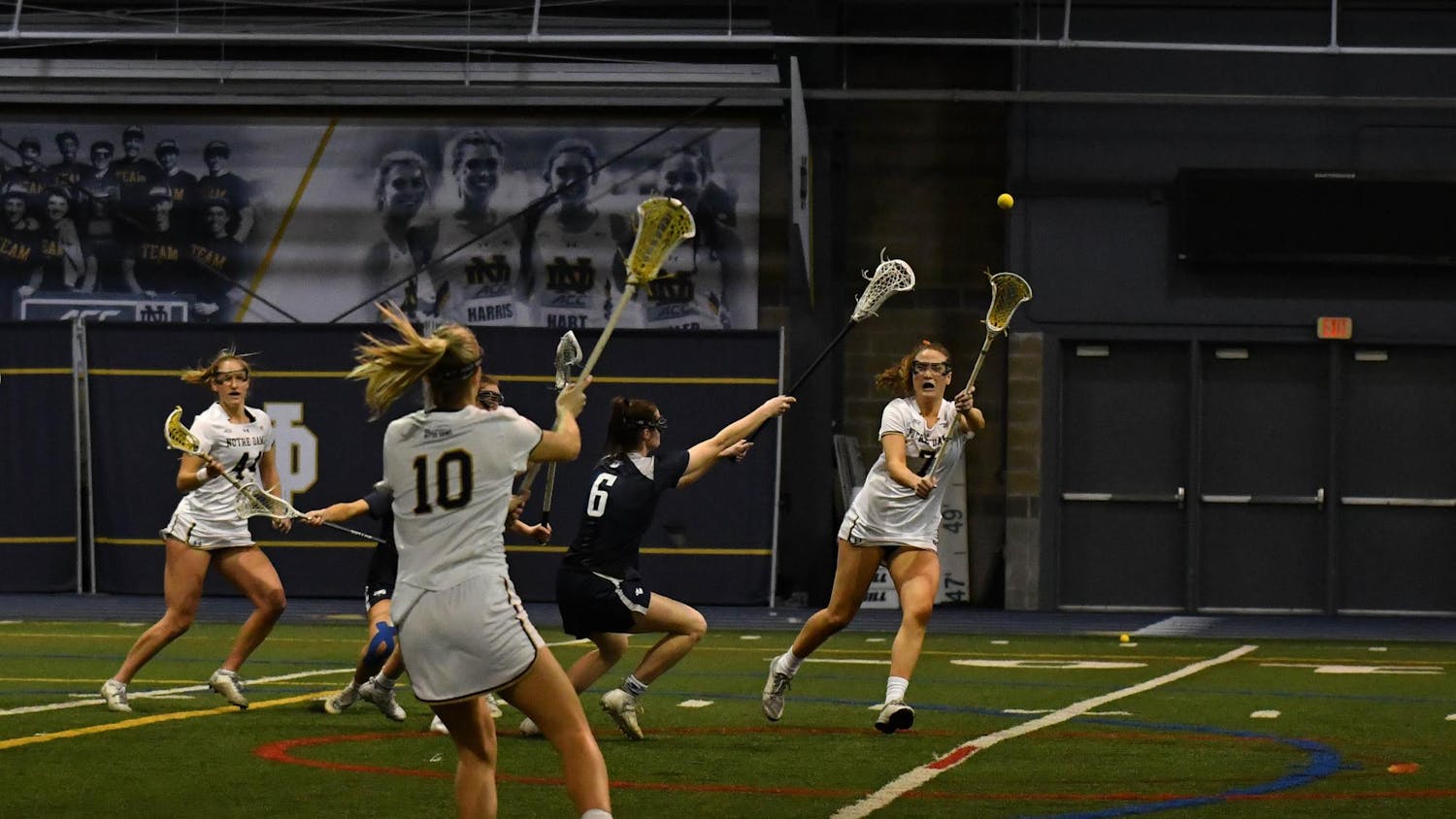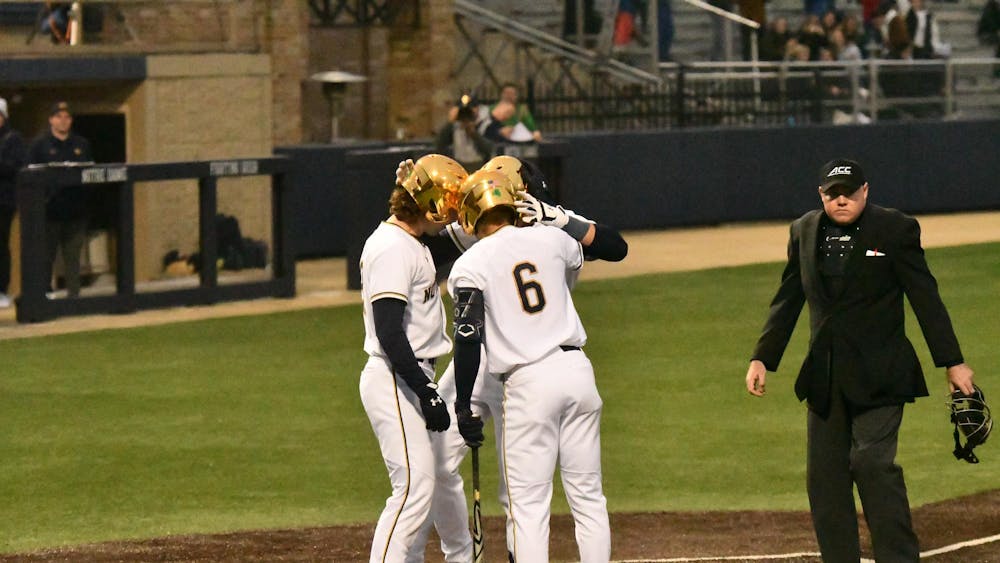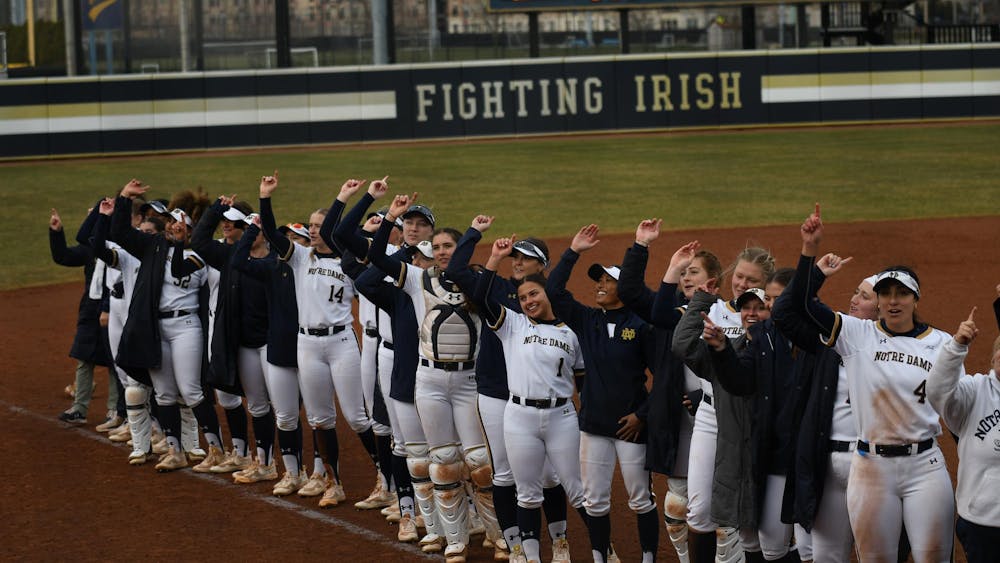Editor's Note: This is the first in a 10-part series in which our writers debate what is the most unbreakable record in sports. Follow along with the conversation on Twitter using the hashtag #UnbreakableRecord
As the oldest student writer on The Observer staff, I have been given the great honor of kicking off our first Sports Authority Debate of the year. I’m sure the bigwigs up top expected a compelling and persuasive piece from a veteran, a piece that in some shape or form reflects what completing an undergraduate degree at the University of Notre Dame stands for. Sorry to let you guys down.
With age comes wisdom, and I would like to share the solitary kernel of wisdom I have actually garnered over the years. Don’t enter a fight you can’t win. Pick your battles and only pick those with guaranteed victory. It leads to a phenomenal winning percentage.
Most of my fellow writers will choose a record that reflects a truly impressive individual performance. Maybe it was a record set in an era with characteristics unattainable in this day and age. Maybe my peers will choose a record that reflects longevity, one that was a career in the making. No doubt their “unbreakable records” will be impressive performances, by impressive players, records that have shaped the landscape of their respective sport.
Me? I’m just choosing one that is physically unbreakable. Again, pick your battles and only pick those with guaranteed victory.
Currently, there is a tie for the longest play in NFL history. In 2007, then-Chargers cornerback Antonio Cromartie returned a missed field goal for 109 yards. Last season, Vikings wide receiver Cordarrelle Patterson returned a kickoff for 109 yards. Unless the size of an NFL field is changed, those records will stand unbroken throughout NFL history.
No play from scrimmage can be longer than 99 yards, as you cannot snap the ball from within your own end zone. Any form of return can go more than 100 yards, where the player can take the ball from their end zone and down the length of the field. Hence, the two 109 yard returns.
Yet, a player cannot return the ball for 110 yards. To do so, he or she would have to take the ball at the back endline. In doing so, that player would be out of bounds and the play would result in a touchback. As the NFL doesn’t allow for partial yardage in their stat keeping, it is physically impossible to return a kick for more than 109 yards under the current field dimensions.
That leaves only one way for this record to be broken. If the NFL decided to make fields longer, there could be longer plays.
First, that’s not going to happen. Can you imagine the renovations that would have to be done to football fields of all levels nationwide? I can’t ever picture a scenario that would make a longer field worth the cost of those changes.
Furthermore, I can’t even picture a scenario in which someone would argue for longer football fields. What would the game gain? We currently have a 100-yard football field with two 10-yard end zones. Humans love round numbers. Simple as that.
Even if the NFL did decide to change the size of a standard football field, the league would probably have to list official records for the shorter field dimensions, especially when the records in question involve yardage covered in one play. So, regardless, those two records will stand.
In summary, no one will return the ball more than 109 yards because the dimensions of the football field will not allow it. Therefore, any plays that go for 109 yards will always be the longest plays in NFL history. Sure, future players can tie this record, but no one can break it. In other words, Cromartie set a literally unbreakable record in 2007, one that Patterson tied.
So, what is the most unbreakable record in sports? I’m going to go with the one that cannot be broken, one that is not dependent on the ever-improving ability of athletes. I’ll choose the record that can’t be broken because of league rules, official lines and field structure.
Was my argument flashy? No. Will I be right? Yes.













